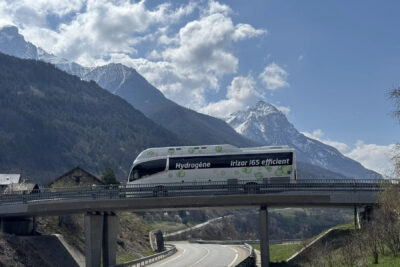German hydrogen consortium working on flat H2 tank
BMW, Bosch, Hexagon Purus and Testnet Engineering are working together on a flat hydrogen tank for the underbody of future fuel cell cars. The first prototypes of the 700 bar high-pressure storage tank are to be developed by the end of 2022.
The declared goal is for the hydrogen tanks to be able to be integrated into the installation space normally provided for the integration of the battery pack in electric cars. To achieve this, the hydrogen tanks must above all become flatter than before. While the cuboid battery modules can fill the existing installation space in the underbody between the axles quite well, this has not been the case with hydrogen tanks so far.
The high-pressure tanks are cylindrical and therefore have different installation space requirements. In the Toyota Mirai, a large H2 tank is placed longitudinally under the centre console, and others are installed transversely on the rear axle. In the Hyundai Nexo, the three tanks are also installed around the rear axle: Two tanks sit transversely under the rear seat, the third behind the axle under the boot. The tanks each have a diameter of around 30 centimetres. By comparison, the flattest BEV batteries are only eleven centimetres high.
Within the ‘FlatHyStor’ consortium, the Kassel-based company Hexagon Purus has a key role to play: Hexagon Purus will develop the corresponding high-pressure hydrogen cylinders and the corresponding vehicle integration structure. Bosch will supply the tank valve and high-pressure regulator technology, and Testnet Engineering will validate the components.
The announcement does not say for which vehicle the integration solution will be developed. BMW is currently working on only one hydrogen vehicle: the iX5 Hydrogen. A small series based on the combustion engine X5 is planned. The individual cells of the fuel cell come from Toyota. The fuel cell stack, known as the stack, and the overall drive system are developments of the BMW Group.
The project “FlatHyStor – Functional design and testing of an innovative hydrogen tank system” is funded by the German government with a total budget of six million euros.





6 Comments